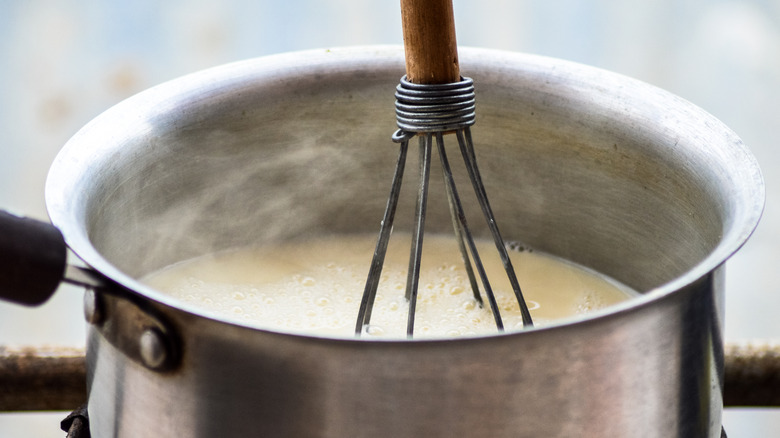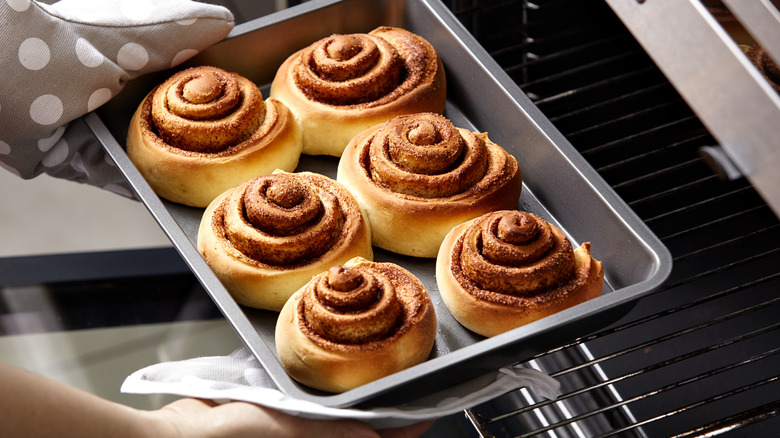The Key Advantage Scalded Milk Offers When Baking
If you've ever flipped through your grandma's old cookbooks and recipe cards, or those amusing community cookbooks, you're sure to discover some head-scratching recipes and methods. Jell-O salad, anyone? Mildly horrified fascination and amusement aside, the home cooks in the eras these recipes come from were inventive, resourceful, and did the best with what they had. Americans didn't have access to the ingredients we have today, meaning that sometimes a bottle of ketchup wound up in a spaghetti sauce recipe.
One method you might have run across, especially in older baking recipes, is scalding milk. Before milk was pasteurized to kill bacteria in an industrial setting, people had to do it at home by heating it. We tend to think of scalding as being quite hot, but really you're only heating the milk until just before it boils, according to Food Network. And, in a practical sense, it's not really necessary to scald milk, but if a recipe calls for it — especially in baking — it's best not to skip it even though it seems unnecessary.
Scalded milk isn't just for your grandma's cinnamon rolls
There is some merit to scalding milk, even though modern advancements in food safety have made it an almost obsolete practice. Yet, in a modern sense, it does serve a purpose. The whey protein in milk inhibits yeast so that it won't rise your bread. Scalding the milk for recipes like cinnamon rolls or bread weakens the whey, which will let the yeast do its job more efficiently. According to Food Network, scalded milk gives the yeast a boost, too, because yeast works faster in warmer liquids than colder ones. Scalding milk is also the perfect opportunity to infuse different flavors into your final baked good, or even dairy-infused mashed potatoes. You can try adding vanilla pods or cinnamon sticks to your milk as it warms and then picking them out as the milk cools.
If your next baking adventure calls for scalding milk, keep an eye on the temperature; anything beyond 180 degrees Fahrenheit and you'll risk scorching the milk — not a flavor you want. If you don't have a thermometer, remove the milk from the heat as soon as you see bubbles forming around the edge of the saucepan. Your milk needs to be cooled to around 110 degrees Fahrenheit before you use it so you don't kill the yeast, per Southern Living.

